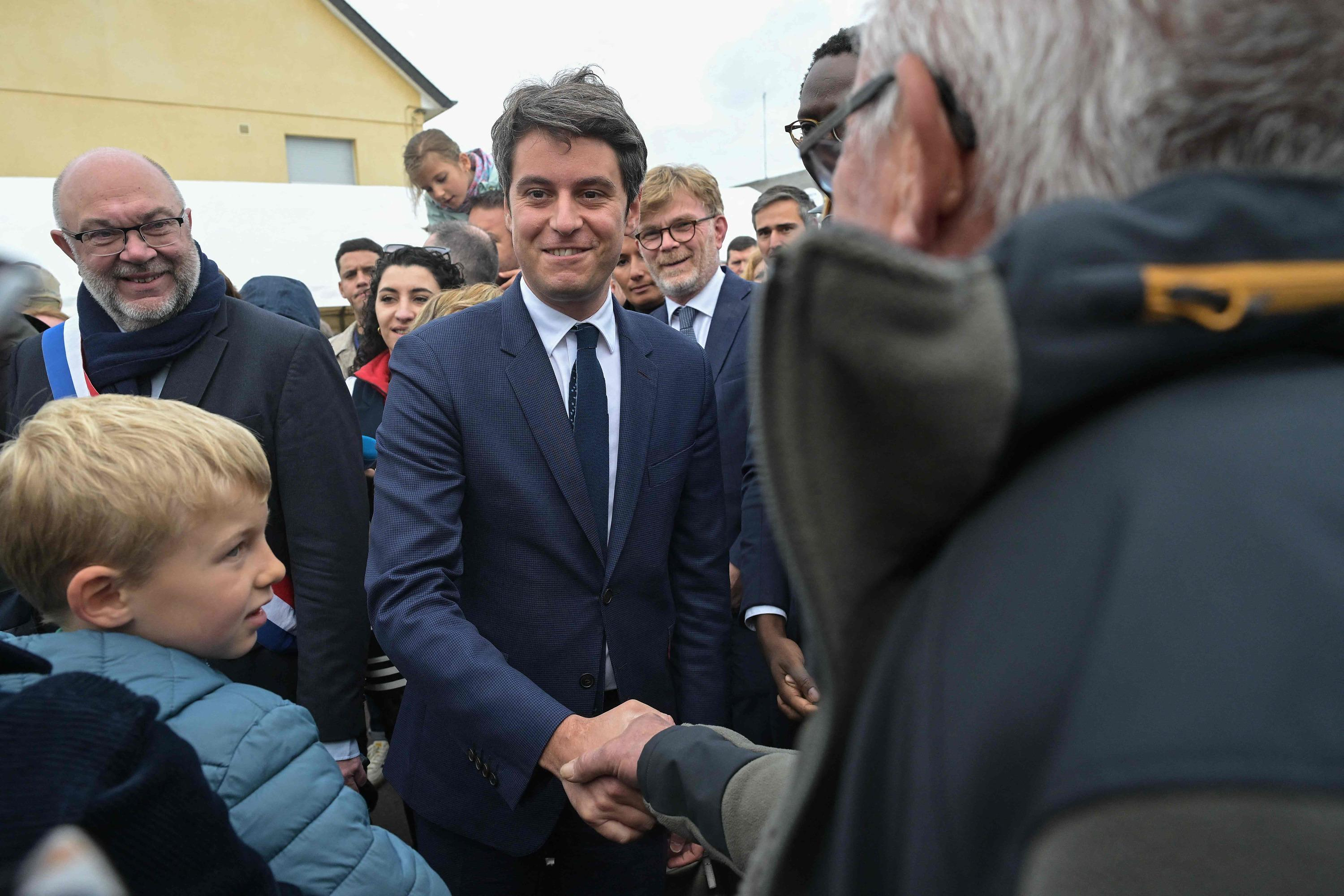Despite all the delays, the train is being used more and more. Over Christmas, from December 22 to 28, the long-distance division of Deutsche Bahn AG recorded around 3.2 million passengers. That is 400,000 more than the previous Christmas peak of 2019. And because the Corona dent is also overcome at other times, one can ask whether ICEs have to offer more space for more passengers.
One can therefore ask whether high-speed trains, like many intercity and very many regional trains, should be double-decker. In France the TGV has it, the so-called Duplex has up to 30 percent more seating capacity and also runs in Germany on the route from Paris to Frankfurt/Main. With the Avelia Horizon model, the duplex manufacturer Alstom recently presented the next generation of high-speed double-decker trains.
But although Alstom (like Siemens) was recently commissioned by DB to develop the concept for the next ICE series - for a 300 km/h fast ICE 5 - the German state-owned company rules out double-deckering in this vehicle segment. As the ICE 5, which will be tendered as a specific procurement project in the coming year and is scheduled to go into operation in 2030, DB wants to have a 400-meter-long, significantly more energy-efficient train with around 950 seats - which should be on just one floor.
The rail policy spokesman for the Greens, Matthias Gastel, finds this preliminary determination unsatisfactory: "In my view, Deutsche Bahn is well advised to leave the decision open as to whether the ICE 5 will also remain single-deck or will be sent into the race as a double-decker train," said Gastel WORLD.
Instead of making a decision on this, “clear specifications, for example, for accessibility and space for passengers and their luggage should have been defined”. "Then we'll see," says Gastel, "how innovatively the railway industry reacts to this and what solutions it offers."
In Gastel's view, Germany "urgently needs significantly more capacity for the necessary switch from cars and planes to the more climate-friendly train". But the expansion of the rail infrastructure required for this would take up to 20 years or more. On the other hand, the first ICE 5 could be delivered in as little as nine years and would therefore provide relief relatively quickly. "Thanks to the higher number of seats, double-decker trains save on the scarce track and station capacities," says Gastel. "They could be used, for example, as sprinters on routes that are particularly popular."
In the DB you see it differently. But that's not due to what comes to mind first when traveling by train when it comes to fast double-decker trains: that some wagons swayed alarmingly. In the meantime, this has been remedied in the DB double-decker intercity trains affected, and the Swiss SBB's enormous difficulties with Bombardier's FV Dosto usually had other causes. There are no fluctuation problems with the Alstom duplex.
DB's decision to retain the ICE one-story system is based on the fact that it "fits much better with the existing infrastructure," as a company spokesman said when asked by WELT. All operating and deployment concepts as well as the equipment in the ICE maintenance workshops are designed for single-deck trains. In addition, very good acceleration of the trains is particularly important in the German network with the more frequent station stops compared to France. Single-deckers are superior here.
"Furthermore," said the Bahn spokesman, "with an aging society, we are avoiding stairs inside the train as a potential access barrier, creating an easier passage for all passengers. Boarding, toilets, access to the on-board restaurant – everything is on one level.”
In addition, single-story trains would give "a better sense of space". In fact, the top floor of a TGV duplex can sometimes seem cramped to German travelers and luggage space is very limited. However, this could possibly change if a train is completely redesigned.
What cannot be changed, however, is the German specialty that many platforms are very narrow. This becomes a problem when a large number of people want to get on and off. And on a double-decker train, there are even more people.
The resulting traffic jams almost inevitably cause delays in departures, which then disrupts the dense headway at major junction stations. So "the trains must allow for a quick change of passengers," emphasizes the DB spokesman. As a result, rail passengers in Germany will still not be able to look out over noise barriers from an ICE top floor in the future.
"Kick-off Politics" is WELT's daily news podcast. The most important topic analyzed by WELT editors and the dates of the day. Subscribe to the podcast on Spotify, Apple Podcasts, Amazon Music or directly via RSS feed.

 B:SM will break its investment record this year with 62 million euros
B:SM will break its investment record this year with 62 million euros War in Ukraine: when kyiv attacks Russia with inflatable balloons loaded with explosives
War in Ukraine: when kyiv attacks Russia with inflatable balloons loaded with explosives United States: divided on the question of presidential immunity, the Supreme Court offers respite to Trump
United States: divided on the question of presidential immunity, the Supreme Court offers respite to Trump Maurizio Molinari: “the Scurati affair, a European injury”
Maurizio Molinari: “the Scurati affair, a European injury” First three cases of “native” cholera confirmed in Mayotte
First three cases of “native” cholera confirmed in Mayotte Meningitis: compulsory vaccination for babies will be extended in 2025
Meningitis: compulsory vaccination for babies will be extended in 2025 Spain is the country in the European Union with the most overqualified workers for their jobs
Spain is the country in the European Union with the most overqualified workers for their jobs Parvovirus alert, the “fifth disease” of children which has already caused the death of five babies in 2024
Parvovirus alert, the “fifth disease” of children which has already caused the death of five babies in 2024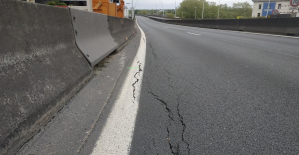 The A13 motorway will not reopen on May 1
The A13 motorway will not reopen on May 1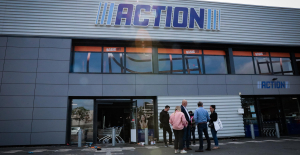 More than 1,500 items for less than 1 euro: the Dutch discounter Action opens a third store in Paris
More than 1,500 items for less than 1 euro: the Dutch discounter Action opens a third store in Paris 100 million euros in loans, water storage, Ecophyto plan… New measures from the executive towards farmers
100 million euros in loans, water storage, Ecophyto plan… New measures from the executive towards farmers “He is greatly responsible”: Philippe Martinez accuses Emmanuel Macron of having raised the RN
“He is greatly responsible”: Philippe Martinez accuses Emmanuel Macron of having raised the RN Les Galons de la BD dedicates War Photographers, a virtuoso album on the Spanish War
Les Galons de la BD dedicates War Photographers, a virtuoso album on the Spanish War Theater: Kevin, or the example of an academic failure
Theater: Kevin, or the example of an academic failure The eye of the INA: Jean Carmet, the thirst for life of a great actor
The eye of the INA: Jean Carmet, the thirst for life of a great actor The Nuc plus ultra: St Vincent the Texane and Neil Young the return
The Nuc plus ultra: St Vincent the Texane and Neil Young the return Skoda Kodiaq 2024: a 'beast' plug-in hybrid SUV
Skoda Kodiaq 2024: a 'beast' plug-in hybrid SUV Tesla launches a new Model Y with 600 km of autonomy at a "more accessible price"
Tesla launches a new Model Y with 600 km of autonomy at a "more accessible price" The 10 best-selling cars in March 2024 in Spain: sales fall due to Easter
The 10 best-selling cars in March 2024 in Spain: sales fall due to Easter A private jet company buys more than 100 flying cars
A private jet company buys more than 100 flying cars This is how housing prices have changed in Spain in the last decade
This is how housing prices have changed in Spain in the last decade The home mortgage firm drops 10% in January and interest soars to 3.46%
The home mortgage firm drops 10% in January and interest soars to 3.46% The jewel of the Rocío de Nagüeles urbanization: a dream villa in Marbella
The jewel of the Rocío de Nagüeles urbanization: a dream villa in Marbella Rental prices grow by 7.3% in February: where does it go up and where does it go down?
Rental prices grow by 7.3% in February: where does it go up and where does it go down? Even on a mission for NATO, the Charles-de-Gaulle remains under French control, Lecornu responds to Mélenchon
Even on a mission for NATO, the Charles-de-Gaulle remains under French control, Lecornu responds to Mélenchon “Deadly Europe”, “economic decline”, immigration… What to remember from Emmanuel Macron’s speech at the Sorbonne
“Deadly Europe”, “economic decline”, immigration… What to remember from Emmanuel Macron’s speech at the Sorbonne Sale of Biogaran: The Republicans write to Emmanuel Macron
Sale of Biogaran: The Republicans write to Emmanuel Macron Europeans: “All those who claim that we don’t need Europe are liars”, criticizes Bayrou
Europeans: “All those who claim that we don’t need Europe are liars”, criticizes Bayrou These French cities that will boycott the World Cup in Qatar
These French cities that will boycott the World Cup in Qatar Paris 2024 Olympic Games: “It’s up to us to continue to honor what the Games are,” announces Estanguet
Paris 2024 Olympic Games: “It’s up to us to continue to honor what the Games are,” announces Estanguet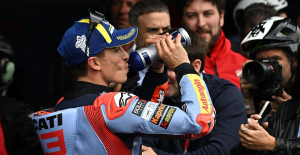 MotoGP: Marc Marquez takes pole position in Spain
MotoGP: Marc Marquez takes pole position in Spain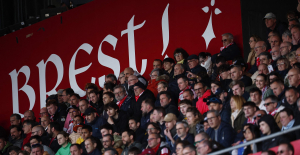 Ligue 1: Brest wants to play the European Cup at the Stade Francis-Le Blé
Ligue 1: Brest wants to play the European Cup at the Stade Francis-Le Blé Tennis: Tsitsipas released as soon as he entered the competition in Madrid
Tennis: Tsitsipas released as soon as he entered the competition in Madrid





